|
Many have asked how Rick creates this wacky rosette. So,
despite the embarrassment this may cause him because of his low tech
approach, here is how it is done: |
|
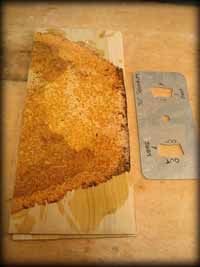 |
The rosette
starts by epoxy gluing amboyna burl to a 1/8" hardwood backer.
The honey color works well with darker tops and the natural red/brown color
with lighter tops. The fixture for cutting out the segments is shown next to
the material with the inner and outer segment sizes. |
|
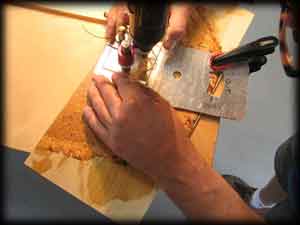 |
Next the inner
and outer segments are cut out using a Dremel tool with a .060" downshear
carbide bit and a special router base with a bushing mounted in it. The segment
will be the size of the cavity in the top minus .020" all around. |
|
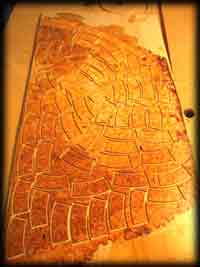 |
We can get quite
a few cut on each piece which is a good thing considering the cost of
the material and labor to get it this far. |
|
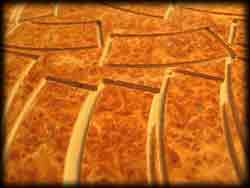 |
Here's a close-up
of the shaped segments, hopefully the same amount of outer and inner pieces.
The router bit was set at .060" deep. |
|
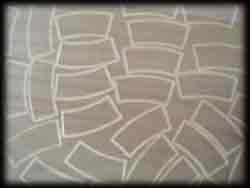 |
This is a shot
looking at the back side held up to a window for light. You can see that
there is just a few thousands of an inch of material left. We then run this
through the thickness sander backside up and sand until we reach the bottom
of the routed channel and the segments drop out. They are ready to use now. |
|
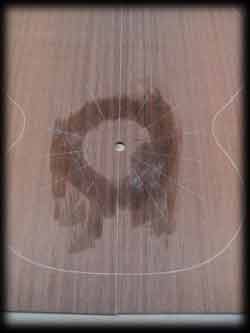 |
Next, the top is
laid out for the segment centerline location. Some superglue is drizzled
around to stiffen up the soft wood fibers to avoid chipping during the
routing process. This is a sinker redwood top. |
|
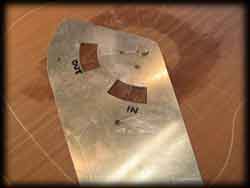 |
The router
fixture is in place now ready to cut out the inner segment cavity. The
centerline of the template is lined up with the centerline on the top.
|
|
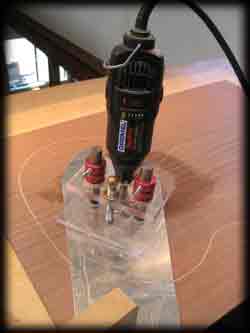 |
The Dremel on the router base
with the bushing is ready to go. |
|
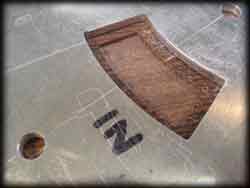 |
The completed cavity. |
|
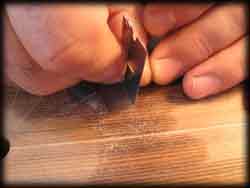 |
Using a razor blade, Rick
squares the corners. |
|
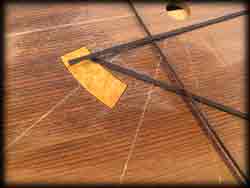 |
The segment fits the cavity
less .020" around the perimeter, the exact thickness of the black purfling
strips to be inserted. |
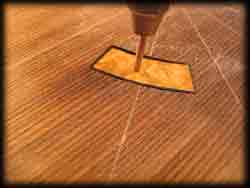 |
The segment is held down with
Rick's very special toothpick and a couple of drops of superglue are
applied. |
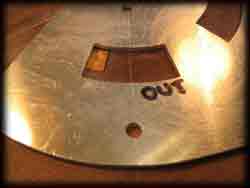 |
After some quick leveling with
sandpaper, the fixture is inserted again for the next segment which will
overlap the first one. |
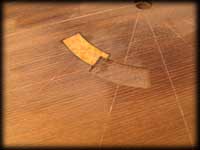 |
Now the outer cavity is cut
out and the process is well on its way. |
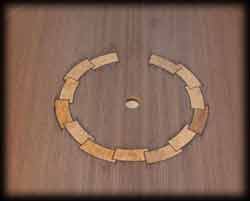 |
The completed rosette...Now
what was so difficult about that? |
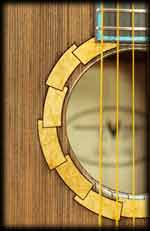 |
Just add a little lacquer and
the burl really pops out. |